Air filter change
The Video Course teaches you everything about modern cars.
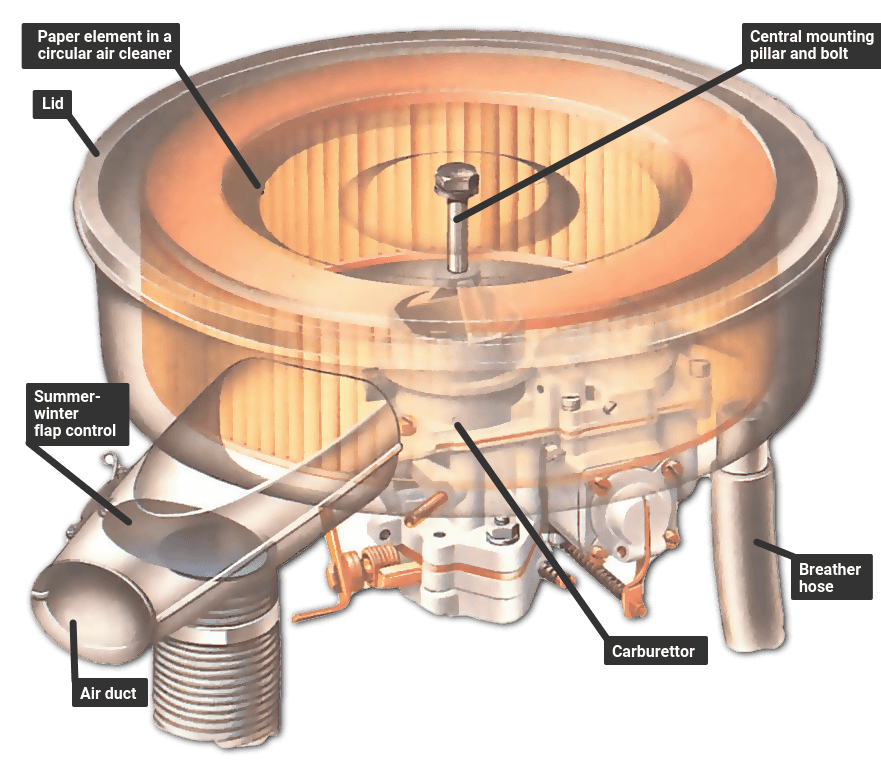
A choked filter in an air cleaner causes increased fuel consumption and, eventually, extra engine wear.
Eventually the filter becomes choked with dirt, so check it every 6,000 miles (10,000 km) or every six months, whichever comes first. If it is dirty, clean or renew it as necessary.
Most modern cars have a renewable paper filter element . The two other types — oil-bath filter and wire-gauze filter — can both be cleaned.
Many cars have ways of passing crankcase fumes into the engine to burn them up. Usually the crankcase, camshaft cover or rocker cover is connected to the air cleaner by a hose .
Look at the hose and any valve or filter that may be incorporated into it (See Checking the emission valve and breather ). Faults here can make the engine run badly, and may choke the filter.
The air cleaner may also have a `summer-winter' arrangement, for setting it to draw in cool or warm air. Usually you alter its setting in spring and autumn. Sometimes the setting is automatic .
There are times when the air cleaner may have to be removed — to work on the carburettor or cylinder head , for example. There are various types of fitting, some of them difficult to dismantle.
Whenever you work on the air cleaner, check that the body is properly fitted to the carburettor ; that hoses are sound and in place; and that the filter element is seated correctly.
Removing and checking the filter element
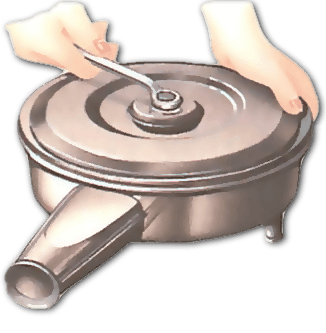
You can usually replace a paper filter element without removing the cleaner body.
The lid of the cleaner may be metal, held on by a single central bolt or wingnut. Unscrew it and lift off the lid.
Some cars have a plastic lid held by several self-tapping screws and sealed around the edge by a tight-fitting rim. Remove the screws and look for an arrow at the rim.
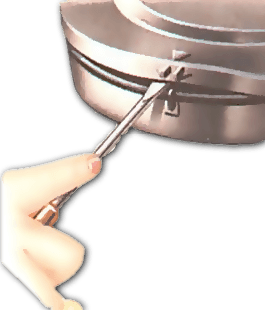
Lever the lid off with a screwdriver at this point only: levering anywhere else could crack the plastic. Do not overtighten the screws when refitting.
Take the element out and look at it. If the cleaner has a side spout the element will be dirty on one side. If it is not obviously dirty and clogged, turn it so that the cleanest section is opposite the intake hole and refit it.
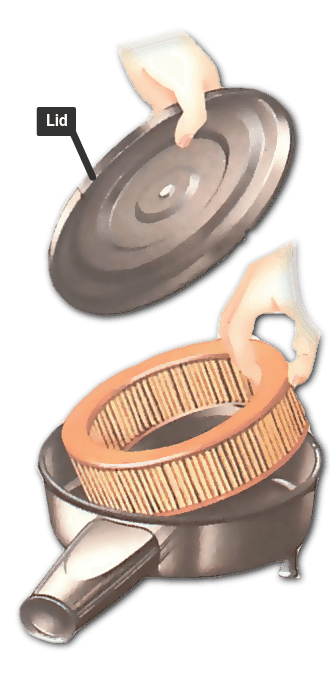
If the element is dirty all over, fit a new one.
A new air-filter element must be the right type and size for your car. Consult your car handbook for the correct type. Different elements let varying amounts of air through. However, the new element may look different from the old one. Some are supplied folded, and have to be pulled out into shape.
To clean a wire-gauze filter, take the cleaner off and remove the top of the casing. Lift out the gauze element. Wash it and the casing thoroughly in petrol.
Generally the element is meant to be lightly oiled; consult the car handbook. If so, dip it in engine oil and stand it on a tray to drain. Refit the element and the cleaner.
Removing and refitting the cleaner body
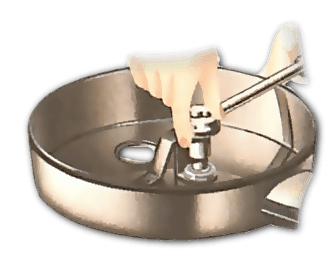
On some carburettors there is a central bolt from the carburettor through the air cleaner and into its lid. Take the nut off the bolt to remove either the lid or the whole cleaner. Unclip any breather hose connected to the cleaner.
There is a rubber gasket on a flange on the intake stub of the carburettor. Refit it the right way round: there are often holes in the flange which must not be blocked.
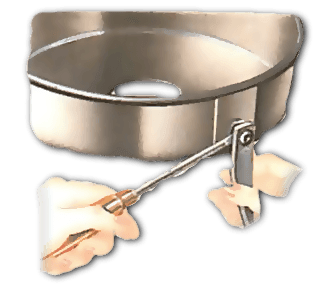
Another, older system has a rubber seal and clamp. Unscrew the clamp to free the cleaner. To refit, place the seal squarely around the intake stub. Slide on the cleaner and tighten the clamp.
Do not overtighten the clamp or you may force the seal off so that it falls into the carburettor. If the seal is swollen with age and no longer fits, change it.
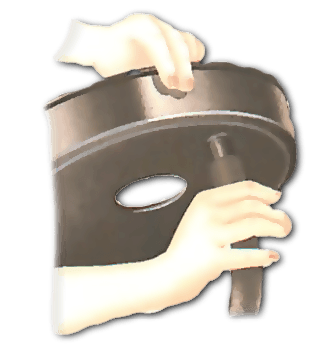
Weber twin-choke and some Solex carburettors often have an air cleaner held on by studs with nuts. These are either self-locking nuts or have locking tab washers underneath. They must lock properly: do not let one fall into the carburettor - it may be sucked into the engine and cause a lot of damage.
Reuse locking tabs only if there is an unbent corner left to fold up.
Sometimes the cleaner sits on two brackets fixed to the engine. Pins on the cleaner fit into rubber or plastic rings set in holes in the brackets. Lever the pins out with a broad screwdriver.
If a ring comes out of the hole, push it back. Grease the pin lightly when refitting. Replace any damaged ring.
Summer-winter settings
Turn a circular air cleaner with a spout so that it draws warm air from near the exhaust manifold in winter, and cool air from an open space in summer. Before twisting it, slacken retaining nuts or clips.
Instead, it may have a flap valve inside, with a control marked 'summer-winter' or with sun and snowflake symbols.
The Ultimate Car Mechanics video course
Learn everything about modern cars from our new video series.
Learn more >-
We build a Mazda MX5 Miata from scratch
We start by tearing down and then rebuilding the whole car.
-
Every part explained
There's ridiculous detail on every part. Clearly and easily explained.
-
All modeled in 3D
We've created the most detailed 3D model ever produced so we can show you everything working.






